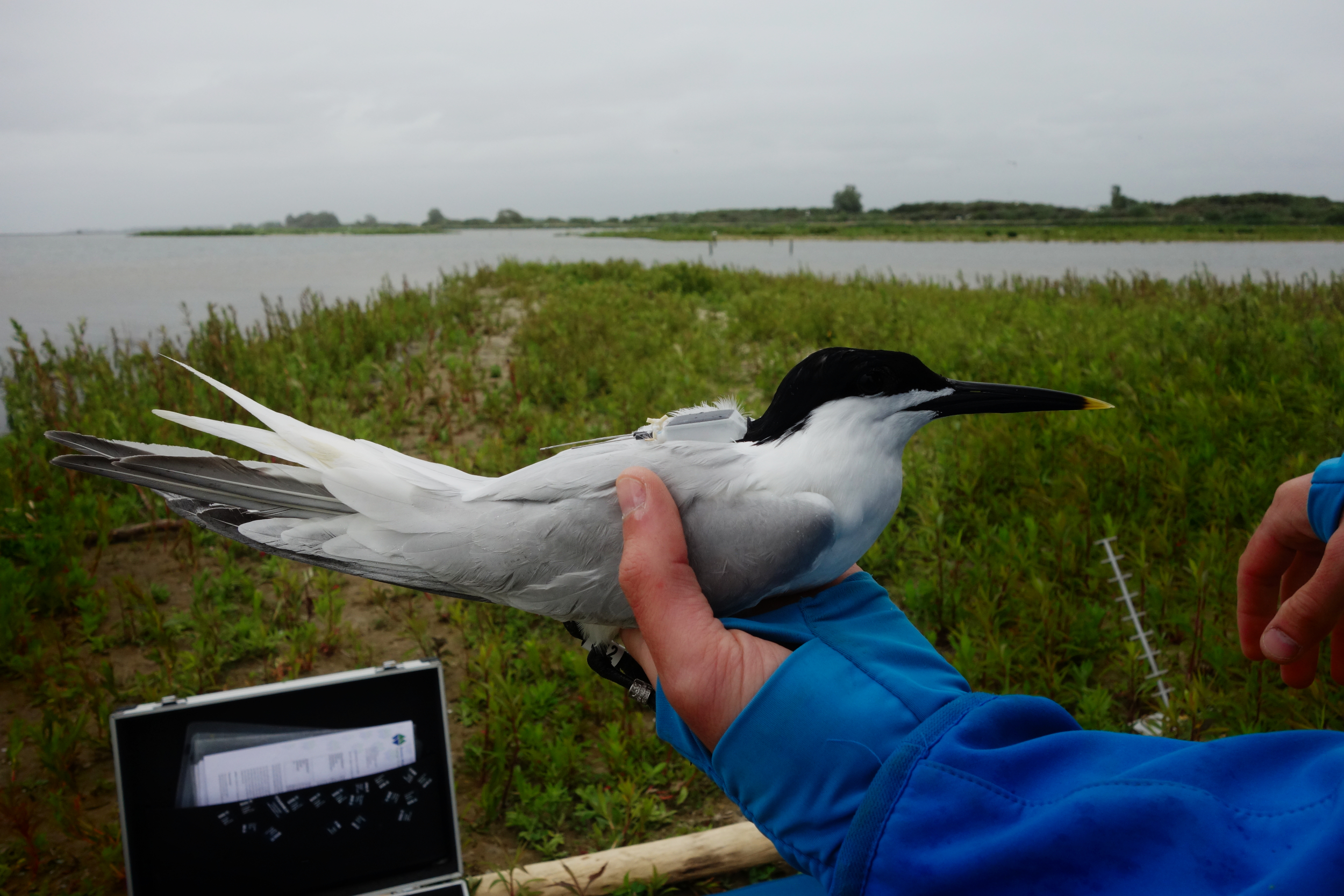By Rob S.A. van Bemmelen
Related Paper: Avoidance of offshore wind farms by Sandwich Terns increases with turbine density by Rob S.A. van Bemmelen, Jacco J. Leemans, Mark P. Collier, Ros M.W. Green, Robert P. Middelveld, Chris B. Thaxter, and Ruben C. Fijn. Ornithological Applications.
The North Sea is one of the main areas in Europe for the development of offshore wind farms. These wind farms are important for the transition to renewable energies but pose a potential risk for seabirds. Wind farms can contribute to increased seabird mortality due to collisions or habitat loss (when wind farms are avoided). The rate at which birds avoid entering a wind farm, the macro-avoidance rate, is an important parameter when calculating the potential effects of offshore wind farms. However, it is unknown for many species, difficult to measure, and estimates often differ between studies.
In the North Sea, the Sandwich Tern (Thalasseus sandvicensis) is a species of special concern when it comes to the potential effects of wind farm development on their populations and regulations seek to protect them. As an example, for one wind farm, consent to build was withdrawn following estimates of collision rates that were deemed too high.
One of our main research topics was the extent to which terns avoid entering wind farms. We aimed to answer this question by tracking individual terns and studying their response to established wind farms. We could draw on projects in which we GPS-tracked individual Sandwich Terns in two colonies: De Putten in the Netherlands and Scolt Head in the United Kingdom. Three offshore wind farms were operational in the foraging range of birds from the Dutch colony during the study period, while four farms were operational near the British colony.
But the question of how to estimate avoidance rates based on tracking data in the absence of pre-construction data remained. This is not trivial, as tracking data only tells you where the bird has been; there is no direct information on its choices. For this question, integrated step selection functions (iSSFs) provide a useful solution. In iSSFs, the actual positions of the bird are compared against a background of positions that were available to the bird at each step in its track. These ‘availability points’ are generated at random from the distribution of step lengths (the distance between two subsequent GPS fixes) and the turning angles (the angle between two steps). Imagine that a bird is usually flying straight lines at a constant speed. The available positions would then be positioned close around a straight line, with positions close to the actual track. Avoidance of offshore wind farms (or any other area of interest) becomes apparent if the actual track deviates from what you would expect (the availability points). This is how we estimated the degree of avoidance of entering offshore wind farms by Sandwich Terns.
Our modeling results suggest that on average, the terns reduced their use of the Dutch offshore wind farms areas by 41%, and their use of British offshore wind farms by 54% compared to what is expected based on their movement patterns. As seven wind farms were within the foraging ranges of the terns from the two colonies, we also could estimate avoidance rates for each wind farm separately. Although these estimates were associated with rather large uncertainty, they allowed us to study whether avoidance rates could be explained by wind farm characteristics. We did not find a relationship between avoidance rates and distance to the colony nor the size of the wind farms. However, we did find evidence of a positive relation between the density of turbines and avoidance rates. In other words, the closer together the turbines, the more terns will avoid entering the wind farm. This is an exciting finding, as this relationship had been suggested earlier, but had not been demonstrated. Note that wind farms with turbines further apart also usually have larger turbines, so these two factors are confounded. However, we think the space between turbines is the more important factor to seabirds, considering turbines are unusual elements at sea irrespective of whether they are large or very large.
Our study provides input for models to estimate the number of collisions with offshore wind farm turbines, as well as how foraging ranges will be affected by offshore wind farms. As such, the results will hopefully help in positioning offshore wind farms where their effect on Sandwich Terns is minimized. Additionally, our study suggests that another way in which future wind farms might be able to reduce their effect is by placing turbines further apart.
With the growing expansion of offshore wind farms and a growing number of GPS-tracking studies of birds interacting with them, iSSFs form a promising technique to quantify avoidance rates also in other species and other regions of the globe. With GPS tracking data at finer temporal resolution, it will also be possible to study the movements of birds that enter wind farms: the so-called meso- (avoidance of the rotor swept zone of a turbine) or even micro-avoidance (avoidance of individual blades).
